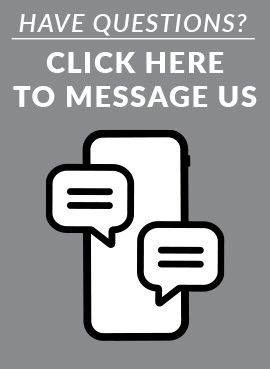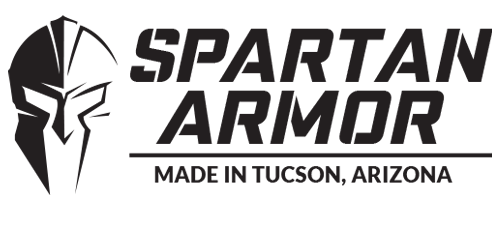What Tactical Gear Do We Absolutely Need & What Can We Do Without?
By: Rob Orgel, Emergency Response Tactical
First, let's understand the premise of tactical gear. Tactical gear is something I'm going to wear or keep close by for emergency situations, training, and range time. Not all training needs to be conducted on the range and this is why I listed both. Our "emergency" is what we're training for, which is often left to our imagination (or other people's experience) to portray what that emergency will look like. Let's spend our time talking about training and range time.
On the range, there’s a lot of gear I will not bring. We have this idea of a militaristic appearing kit that we will never wear to the shooting range. Often, I find this or the opposite. Many people will wear lots of fancy tactical equipment on the range, but then stuff it in the back of their closet when they get home. It is my theory that we should train for our reality. What this means is, you keep your body armor and gear close by where you operate every day. That might be in your vehicle, that might be your bedside, or in your home office. If your gear is not close by, then you shouldn’t train on the range as if you’ll be wearing your gear during your emergency. If you do keep your gear close by or work in this kind of gear because it’s your job, then it should be a requirement for you to wear your gear when you’re on the range. Becoming familiar with the gear most organic to yourself day-to-day is of the utmost importance. In training, this might mean doing push-ups, going for a run, or just drawing and reloading practice facing in a safe direction in a controlled environment. In training, it’s a good idea to prepare for what you expect your emergency to be. Let’s keep it realistic. My mentality about pistol work is that I will be concealed. I need to deploy my firearm in close quarters with just a few rounds. Part of my everyday carry is not a spare magazine. I don’t spend a whole lot of time training on reloads with my EDC.
Now my kit for competition involves a belt with an exposed holster that has rapid smooth access and multiple magazines. In my competition kit/tactical kit I will focus on reloads, multiple targets, and movement. Here, I’m assigning reality to the individual kit. When it comes to Carbine work around the house, if there’s an emergency and I grab my AR-15, I will not have spare magazines on me. In competition or tactical environments I will have multiple magazines and will need to reload multiple times. So I like quarantining the training to the kit. In other words, I will be wearing this kit in specific circumstances. In these circumstances, I will not have extra magazines. This way I can truly focus on what’s important for that kind of actuality.
As we segregate the different kits, my EDC I train for a rapid draw with my flashlight, a rapid draw with my pistol, single target, or multiple target rapid engagements. Usually, it stops there. When I put on my duty belt or competition belt, now I will do positional work and movement, and much more. My competition belt offers me a holster that sits lower on my body and is not concealed. The lack of concealment of my holster is the holster speaking to me in its design. It is designed to have rapid access but not be concealed at all. My EDC holster leans towards my body and is worn inside the pant line. It’s much more concealed but rapid access can be difficult. Dissecting your holster before attaching it to your belt is an important part of the process. Holsters speak to you as to what job they want to do. We have to trade accessibility and speed for concealment. You get to decide what degree the trade takes place.
Magazines and flashlights
On my EDC as I mentioned earlier, I don’t carry additional magazines. It is my theory that your carry gun should hold 12 to 15 rounds or hopefully even more. If this is the case I don’t see a need for additional magazines. Where I do place a high value is my flashlight. My flashlight is likely to come out first in the case of an emergency. Now I’m not saying I wouldn’t skip straight to firearms if the circumstances required. When I look at my competition or duty belt, I will have a flashlight on the belt. This flashlight is in addition to my EDC flashlight. So why would I add an additional flashlight as I put a belt on top of my under belt? Quite simply because my flashlight no longer needs to be tucked within my pocket. This allows me to have a larger and more powerful flashlight because it does not need to be concealed. You’ll find the same logic taking place on my rifle vest. I can have a larger and more powerful flashlight attached to my rifle vest. This flashlight is also designed to accompany my rifle which gives me the capability of longer-range engagements. So my rifle vest flashlight will have a tighter and more powerful cone, therefore, allowing me to see much further out and engage threats with my carbine. Of course, I will play all the same logic in my weapon-mounted lights.
Without going into the nitty-gritty there are many more pieces of tactical equipment you can apply to your kit given your mission-specific intentions. I really focus on the basics. My list includes a flashlight, a primary weapon (this could be a pistol or rifle), how many magazines are required (if any additional ones are needed at all), a tourniquet (check out this article for a dive deep into tourniquets), and of course a pocket knife for utility. Finally, before I take a step out of the house or onto the range, I do a final check. My final check is administrative time. During this administrative time, I can check the capacity of my magazines, the status of my weapon, and if my flashlight still has good batteries in them. Once I see all of my gear is satisfactory, I’ll usually do a few jumping jacks or run in place. This is to make sure all of my gear is still tight to my body and nothing is going to fall off during whatever activity I’m about to participate in. I’m also looking for any excess rattling. Rattling that might give away what I’m carrying under my shirt or give away my position if I’m trying to move quietly. This in the military is known as PCC‘s and PCI’s, (pre-combat checks, and pre-combat inspections). It is a good thing to take an extra 30 seconds before you leave the house to make sure all of your gear is where it belongs before you might need it in an emergency or accidentally lose control of one of these items. Quite simply I’m sure you’ve gathered from this article, that I’m a minimalist. It’s easy to add gear on top of gear when you don’t have to carry it anywhere. As soon as you put your vest on or buckle your belt and wear it for a full day, you’ll see why I’m a big fan of the “less is more” approach.
About the Author:
Rob joined the USMC in 2004 with a military occupational specialty of 0311 (Infantry Rifleman). Assigned to 3rd Bn 1st Marines, Rob participated in a deployment to Iraq (OIF-3) as a point man followed by an assignment as Team Leader for the 13th MEU Special Operations Capable to Iraq (OIF-6). In 2007, he joined 1st Marine Regiment and reenlisted to deploy to Afghanistan. InJanuary 2010, Rob was promoted to the rank of Sergeant & continued to serve 1st Marine Regiment for a year-long deployment in Afghanistan. On return from Afghanistan, Rob was assigned to School Of Infantry West to work as a Combat Instructor (CI) for the USMC where he trained thousands of Marines to gain the skills necessary to survive. Rob exited the USMC in 2014 & was immediately picked up by Securing our Country (SOC). As a private military contractor, Rob was responsible for training the specialty teams of operators at the American Embassy in Iraq. Shortly after leaving Contract in 2018, Rob became the Chief Instructor of GPS Defense Sniper School. Rob now gives 100% of his attention to Emergency Response Tactical training all levels over 320 days a year as his passion & full-time job.
You can read his full bio here.



